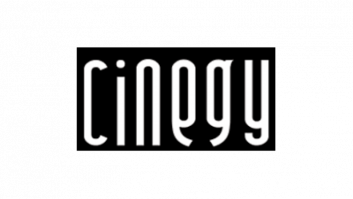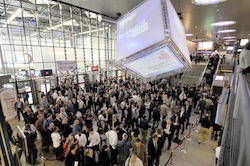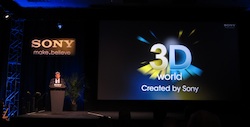A year ago, Red Bee Media introduced the world’s first software-only playout deployment, developed in the company’s innovation facilities Red Lab in Broadcast Centre in London.
TVBEurope catches up with Richard Cranefield, head of product, Playout Service, and Iain Shields, technical product manager, Playout Services, to look back at the past year and discuss what the future looks like for the software and IP development in the media industry.
Roughly a year after introducing the world’s first software-only playout deployment, how has development continued?
RC: When we showed our software-only playout deployment a year ago, what we were demonstrating was that we had lived up to the ambition we set ourselves 18 months prior, and that with the right skills, focus, and development tools we could reach our goal. But at that stage, we had only invented the means to create such an environment and the difference between invention and innovation is that for the latter you need to execute, taking the idea and bring it to the market place.
In the last year we have been working on a number of things: Firstly we’ve moved from our development environment to a proper production environment. This has allowed us to start working at scale and securing the platform so that we can use it to deliver live services. Secondly we’ve been developing the interfaces that will allow our customers to access the services running on the new platform, which in turn has allowed us to provide a new level of transparency that we have never been able to offer our customers before.
Finally, and most importantly, we have been lining up customers to bring onto the platform, the first of which is Channel 4 in the UK that will migrated onto the platform during 2020. Without securing a customer base that benefit from the platform, the work would’ve been for nothing.
What investments have been made to create momentum and make this project successful?
IS: Harnessing the potential of IP in the broadcast space is both difficult and expensive. We’ve had to invest a huge amount of time and resources, not only to get the actual work done but also in planning and measurement in order to ensure we’re focusing on the right things.
One of the biggest investments has been in our people at Red Bee. We have been very fortunate to have started this journey with some of the best broadcast and network engineers available in the industry. On top of this we have made immense investments during the last 18 months in terms of training, building lab environments and optimising the work space in order to iteratively reach the best possible results.
We have also invested heavily in connectivity. Perfectly reliable network conditions are always a challenge, but with the scale we need for uncompressed HD and 4K broadcasts, establishing a foundation through a trusted, monitored and resilient solution was incredibly important. Now that we have done this, we can run any function from any vendor elegantly integrated and automated in a software-only environment for any customer worldwide.
Our end-to-end, glass-to-glass product selection is customer-driven and echoes industry demand. We already have products available for most media workflows and our capability will only increase throughout 2020 as we integrate more software modules and micro-services to deliver for our expanding customer base.
All in all, the investment has very much paid off, and we now have a unique platform that would’ve been close to impossible to build for one single broadcaster. Red Bee can now offer a future-proof playout deployment where we are able spin up new channels fast in a secure environment.
How do you think projects like this change the nature of playout?
RC: This transformation of how we deliver playout services has taught us that development cannot stop. Playout deployments used to be a design and build project followed by years of operation. We are now in a process of iterative development and continuous improvement. Whilst this is common in products that are ‘born in software’, it is a new way of working for a lot of our teams and the vendors we work with. It takes time to find the right cadence for development and the right agile tools to apply to the linear playout world.
Is the future of playout software-only?
IS: The only way the IP transformation will be affordable and successful is through the use of stable, resilient, multi-functional platforms and flexible pop-up products available on a pay-as-you-use basis – and that means software only.
RC: We will see a continued push towards software only deployments but with those softwares being more fragmented. Some of the applications we are running in playout are still quite large and monolithic which bring with them a need for high levels of compute and expensive operating systems to run on. We need the vendor community to work towards a micro-services approach and containerised deployments of playout technology. This has already happened in media management and OTT but the more traditional playout vendors are lagging behind.
What is coming next for IP and the software transformation of the industry in general? What are the challenges and opportunities?
IS: The costs and investment needed for successful IP transformation will undoubtedly lead to further consolidation in the broadcast industry. It is a journey littered with pit-falls and inevitably not all will make it through unscathed. There is also no space in the market for those left behind, as the SDI solutions of the past are just not agile enough to support the market. Those who have invested heavily and wisely will likely reap the benefits and be able to leverage the ‘uberisation’ in the market. Sadly, a lot of the cottage industry that has operated throughout broadcast since its inception will probably fall by the wayside.
RC: With a lot of media processing functions now deployable in software there is an opportunity to look more carefully at the viewer experiences we are trying to create, and to think less about whether we think something is playout or OTT for example – because that isn’t how viewers look at the world. We can now look at the toolset we have as a whole and consider how best we use it to deliver these experiences to audiences. If we are open to changing our mindset and de-compartmentalise our thinking, then there is opportunity to create some really interesting and engaging media experiences for viewers.







